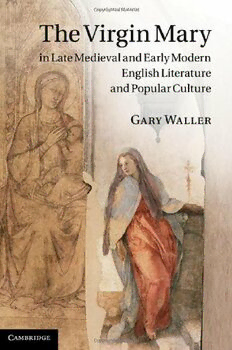
The Virgin Mary in Late Medieval and Early Modern English Literature and Popular Culture PDF
250 Pages·2011·1.486 MB·English
Most books are stored in the elastic cloud where traffic is expensive. For this reason, we have a limit on daily download.
Preview The Virgin Mary in Late Medieval and Early Modern English Literature and Popular Culture
Description:
The Virgin Mary was one of the most powerful images of the Middle Ages, central to people's experience of Christianity. During the Reformation, however, many images of the Virgin were destroyed, as Protestantism rejected the way the medieval Church over-valued and sexualized Mary. Although increasingly marginalized in Protestant thought and practice, her traces and surprising transformations continued to haunt early modern England. Combining historical analysis and contemporary theory, including issues raised by psychoanalysis and feminist theology, Gary Waller examines the literature, theology and popular culture associated with Mary in the transition between late medieval and early modern England. He contrasts a variety of pre-Reformation texts and events, including popular mariology, poetry, tales, drama, pilgrimage, and the emerging 'New Learning', with later sixteenth-century ruins, songs, ballads, Petrarchan poetry, the works of Shakespeare, and other texts where the Virgin's presence or influence, sometimes surprisingly, can be found.
See more
The list of books you might like
Most books are stored in the elastic cloud where traffic is expensive. For this reason, we have a limit on daily download.
